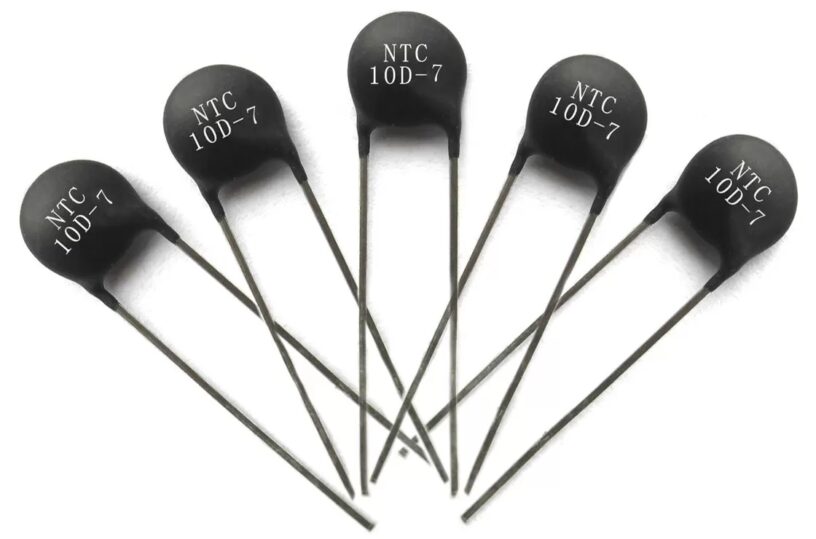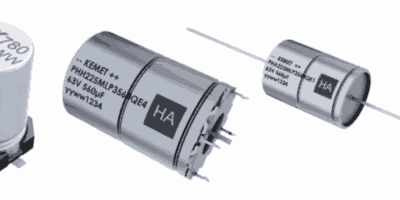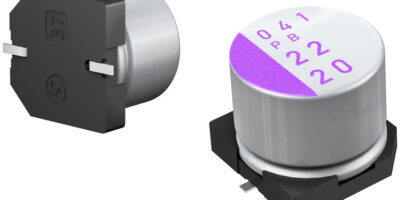Overview
NTC (Negative Temperature Coefficient) and PTC (Positive Temperature Coefficient) thermistors are essential components in modern electronics, with applications in temperature sensing, circuit protection, and control systems. This comprehensive report explores market demand, key growth factors, opportunities, developments, and forecasts for NTC and PTC thermistors.
1. Introduction to Thermistors
1.1. Definition and Functionality
NTC Thermistors: These thermistors decrease their resistance as the temperature rises. They are widely used for temperature measurement and control because their resistance-temperature relationship allows for precise temperature monitoring.
PTC Thermistors: These thermistors increase their resistance as the temperature rises. They are often used for overcurrent protection and as self-regulating heating elements, thanks to their ability to limit current as temperature increases.
1.2. Applications
- Temperature Sensing: Both NTC and PTC thermistors are crucial in applications like HVAC systems, automotive temperature control, and consumer electronics.
- Circuit Protection: PTC thermistors are extensively used in circuit protection to prevent overheating and overcurrent conditions.
- Battery Management: NTC thermistors are employed in battery management systems to monitor and regulate temperature for optimal performance and safety.
- Consumer Electronics: Devices like smartphones, computers, and home appliances use thermistors for temperature regulation and control.
2. Market Demand Analysis
2.1. Rising Adoption of IoT and Smart Devices
The proliferation of IoT (Internet of Things) devices and smart technology has significantly increased the demand for thermistors. These devices require precise temperature control and protection, making thermistors essential components.
- IoT Growth: IoT devices are used in smart homes, wearables, and industrial automation, all of which require temperature sensing and control for optimal operation.
- Smart Devices: Increased use of smart devices in homes and workplaces drives the need for reliable temperature management solutions, where thermistors play a critical role.
2.2. Automotive Industry Expansion
The automotive sector is a major consumer of thermistors for applications such as engine temperature monitoring, climate control systems, and battery management in electric vehicles (EVs).
- EV Market: The rise of EVs requires advanced battery management systems where NTC thermistors are used to monitor battery temperature, enhancing safety and efficiency.
- Traditional Vehicles: In conventional vehicles, thermistors are used in various systems for temperature monitoring and control.
2.3. Industrial Automation and Control
Industrial automation relies on thermistors for accurate temperature control in manufacturing processes and machinery.
- Process Control: Thermistors are integral in process control systems to ensure machinery operates within safe temperature ranges.
- Safety Applications: They provide critical protection against overheating in industrial equipment.
2.4. Consumer Electronics Demand
Thermistors are essential in consumer electronics for protecting components and ensuring optimal performance in devices such as computers, smartphones, and household appliances.
- Electronics Protection: PTC thermistors are commonly used for overcurrent protection in consumer electronics.
- Temperature Monitoring: NTC thermistors help in maintaining device temperatures within safe operating ranges.
2.5. Renewable Energy Systems
Thermistors are increasingly used in renewable energy systems such as solar panels and wind turbines for temperature monitoring and control.
- Solar Panels: NTC thermistors help in monitoring and controlling the temperature of solar panels to ensure efficient energy conversion.
- Wind Turbines: They are used in wind turbines for temperature management in electronic control systems.
3. Key Growth Factors
3.1. Technological Advancements
Ongoing advancements in thermistor technology, including the development of smaller, more accurate, and more reliable thermistors, are driving market growth.
- Miniaturization: Development of smaller thermistors allows integration into compact electronic devices.
- Enhanced Accuracy: Improvements in thermistor accuracy enable more precise temperature measurement and control.
- Reliability: Advancements in materials and manufacturing processes enhance the reliability of thermistors in various applications.
3.2. Increasing Demand for Energy Efficiency
Thermistors play a crucial role in improving energy efficiency in various systems, including HVAC, automotive, and consumer electronics.
- Energy Savings: Thermistors help in optimizing energy consumption by providing accurate temperature control.
- Regulatory Compliance: Energy efficiency regulations drive the adoption of thermistors in systems designed to meet stringent standards.
3.3. Growth of Electric Vehicles (EVs)
The rapid growth of the EV market increases the demand for thermistors used in battery management and temperature control systems.
- Battery Safety: NTC thermistors monitor battery temperatures, preventing overheating and enhancing safety.
- Climate Control: Thermistors are used in climate control systems within EVs for efficient temperature regulation.
3.4. Expansion in Renewable Energy
Thermistors are integral in renewable energy systems for temperature management, contributing to the efficiency and longevity of these systems.
- Solar Energy: Thermistors monitor solar panel temperatures to optimize performance.
- Wind Energy: They are used in wind turbine control systems to ensure efficient operation.
3.5. Growth in Healthcare Applications
Thermistors are used in medical devices for temperature monitoring and control, supporting the growth of healthcare technology.
- Medical Equipment: Thermistors ensure accurate temperature control in devices like incubators and diagnostic equipment.
- Wearable Health Devices: Increasing use of wearable health monitoring devices drives demand for compact and accurate thermistors.
Receive the FREE Sample Report of NTC and PTC Thermistors Market Research Insights @ https://stringentdatalytics.com/sample-request/ntc-and-ptc-thermistors-market/9721/
Market Segmentations:
Global NTC and PTC Thermistors Market: By Company
• Thinking Electronic
• TE Connectivity
• Polytronics
• TDK
• Shibaura
• Shiheng Electronics
• Semitec Corporation
• Vishay
• Amphenol Advanced Sensors
• Mitsubishi
• Murata
• Wayon
• KYOCERA AVX
• Fenghua Electronics
• Bourns
• Panasonic
• Fuzetec
• Lattron
• Sea & Land
• Ametherm
• Keter
• Littelfuse
• Sinochip Electronics
• E WAY Technology
• EXSENSE Electronic
• Tewa Temperature Sensors
• TAYAO Technology
• JOYIN
• KOA
• Elscott Manufacturing
Global NTC and PTC Thermistors Market: By Type
• NTC Thermistor
• PTC Thermistor
Global NTC and PTC Thermistors Market: By Application
• Consumer Electronics
• Medical Instruments
• Automotive
• Home Appliance
• Industrial Equipment
• Aerospace & Defense
• Others
Regional Analysis of Global NTC and PTC Thermistors Market
All the regional segmentation has been studied based on recent and future trends, and the market is forecasted throughout the prediction period. The countries covered in the regional analysis of the Global NTC and PTC Thermistors market report are U.S., Canada, and Mexico in North America, Germany, France, U.K., Russia, Italy, Spain, Turkey, Netherlands, Switzerland, Belgium, and Rest of Europe in Europe, Singapore, Malaysia, Australia, Thailand, Indonesia, Philippines, China, Japan, India, South Korea, Rest of Asia-Pacific (APAC) in the Asia-Pacific (APAC), Saudi Arabia, U.A.E, South Africa, Egypt, Israel, Rest of Middle East and Africa (MEA) as a part of Middle East and Africa (MEA), and Argentina, Brazil, and Rest of South America as part of South America.
Click to Purchase NTC and PTC Thermistors Market Research Report @ https://stringentdatalytics.com/purchase/ntc-and-ptc-thermistors-market/9721/
4. Market Opportunities
4.1. Emerging Markets
Expansion in emerging markets, particularly in Asia-Pacific and Latin America, offers significant growth opportunities for thermistor manufacturers.
- Industrialization: Rapid industrialization and urbanization drive demand for thermistors in manufacturing and infrastructure.
- Consumer Electronics: Growing adoption of consumer electronics in these regions increases the demand for thermistors.
4.2. Development of Advanced Applications
Innovations in thermistor technology enable the development of new applications, providing opportunities for market growth.
- Wearables: Development of wearable devices for health monitoring and fitness tracking.
- Smart Home Devices: Integration of thermistors in smart home devices for temperature control and protection.
4.3. Collaboration and Partnerships
Collaborations between thermistor manufacturers and end-use industries can drive the development of customized solutions and expand market reach.
- Automotive Partnerships: Collaborations with automotive manufacturers to develop thermistors for advanced battery management and climate control systems.
- Electronics Industry: Partnerships with consumer electronics companies to integrate thermistors into next-generation devices.
4.4. Focus on Sustainability
Increasing focus on sustainability and environmental regulations creates opportunities for thermistors in energy-efficient systems.
- Green Technologies: Development of thermistors for use in green technologies and sustainable energy systems.
- Regulatory Compliance: Adoption of thermistors to meet regulatory standards for energy efficiency and environmental impact.
4.5. Advancements in Manufacturing
Improvements in manufacturing techniques can reduce costs and enhance the quality of thermistors, providing a competitive advantage.
- Automated Production: Adoption of automated manufacturing processes to increase efficiency and reduce costs.
- Material Innovations: Development of new materials to enhance the performance and durability of thermistors.
5. Market Development and Trends
5.1. Miniaturization of Components
The trend towards miniaturization in electronics drives the development of smaller and more efficient thermistors.
- Compact Devices: Development of thermistors for integration into compact and portable devices.
- Microelectronics: Advances in microelectronics require smaller thermistors with high accuracy.
5.2. Integration with Smart Systems
Integration of thermistors with smart systems and IoT devices enhances functionality and offers new applications.
- Smart Thermostats: Use of thermistors in smart thermostats for precise temperature control.
- IoT Connectivity: Integration with IoT systems for remote monitoring and control.
5.3. Enhanced Performance and Accuracy
Ongoing research and development efforts focus on enhancing the performance and accuracy of thermistors.
- High Precision: Development of high-precision thermistors for critical applications like medical devices and industrial automation.
- Durability: Improvements in thermistor durability for use in harsh environments.
5.4. Customized Solutions
Demand for customized thermistor solutions tailored to specific applications is increasing, driving innovation in product design and development.
- Application-Specific Thermistors: Development of thermistors for specific applications like automotive battery management or consumer electronics.
- Customer Collaboration: Working closely with customers to develop customized solutions that meet unique requirements.
5.5. Focus on Safety and Reliability
Increased focus on safety and reliability in electronic systems drives the adoption of thermistors for temperature control and protection.
- Overcurrent Protection: Use of PTC thermistors in circuit protection to prevent overheating and damage.
- Safety-Critical Applications: Development of thermistors for use in safety-critical applications like medical devices and automotive systems.
6. Market Forecast and Outlook
6.1. Market Size and Growth Projections
The NTC and PTC thermistors market is expected to grow significantly over the forecast period, driven by increasing demand across various applications.
- Market Value: The market is projected to reach a substantial value by 2030, with a strong CAGR (Compound Annual Growth Rate).
- Regional Growth: Asia-Pacific is expected to lead the market growth due to rapid industrialization and adoption of advanced technologies.
About Stringent Datalytics
Stringent Datalytics offers both custom and syndicated market research reports. Custom market research reports are tailored to a specific client’s needs and requirements. These reports provide unique insights into a particular industry or market segment and can help businesses make informed decisions about their strategies and operations.
Syndicated market research reports, on the other hand, are pre-existing reports that are available for purchase by multiple clients. These reports are often produced on a regular basis, such as annually or quarterly, and cover a broad range of industries and market segments. Syndicated reports provide clients with insights into industry trends, market sizes, and competitive landscapes. By offering both custom and syndicated reports, Stringent Datalytics can provide clients with a range of market research solutions that can be customized to their specific needs.
Reach US
Stringent Datalytics
+1 346 666 6655
Social Channels:




Leave a Reply